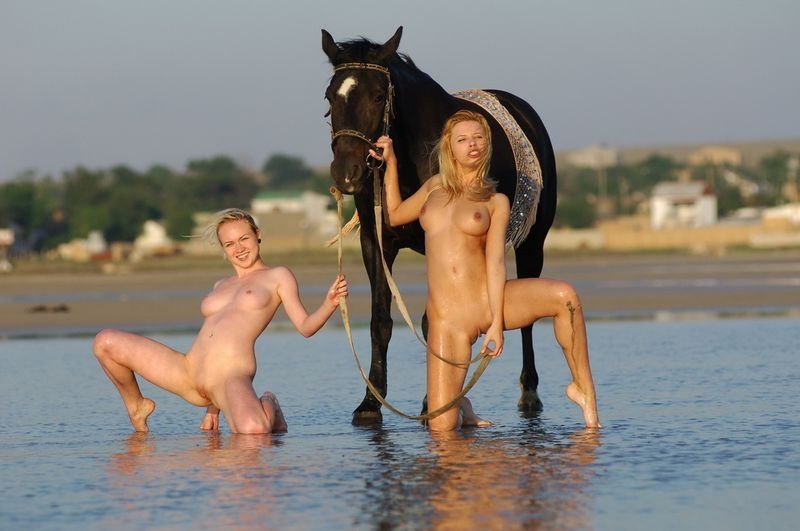|
|
Two Blonde Girls On The Beach With A Horse
|
• Teeth
Horses are adapted to grazing. In an adult horse, there are 12 incisors at the front of the mouth, adapted to biting off the grass or other vegetation. There are 24 teeth adapted for chewing, the premolars and molars, at the back of the mouth. Stallions and geldings have four additional teeth just behind the incisors, a type of canine teeth called "tushes". Some horses, both male and female, will also develop one to four very small vestigial teeth in front of the molars, known as "wolf" teeth, which are generally removed because they can interfere with the bit. There is an empty interdental space between the incisors and the molars where the bit rests directly on the gums, or "bars" of the horse's mouth when the horse is bridled.
An estimate of a horse's age can be made from looking at its teeth. The teeth continue to erupt throughout life and are worn down by grazing. Therefore, the incisors show changes as the horse ages, but a distinct wear and growth pattern, and changes in the angle at which the chewing surfaces meet. This allows a very rough estimate of a horse's age, although diet and veterinary care can also affect the rate of tooth wear.
|
|









